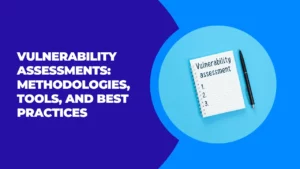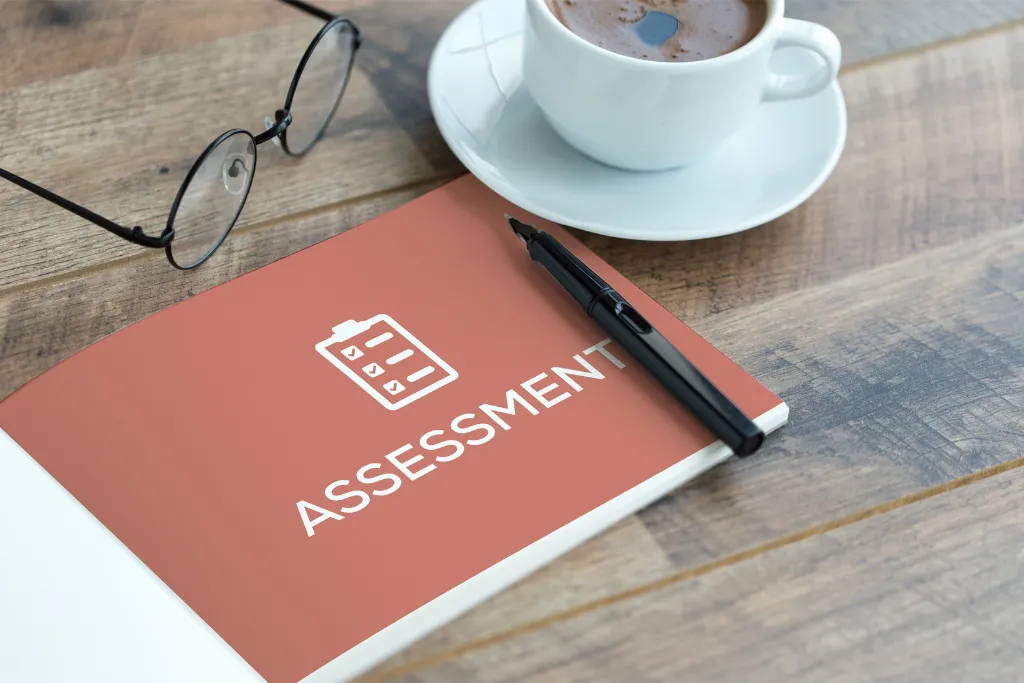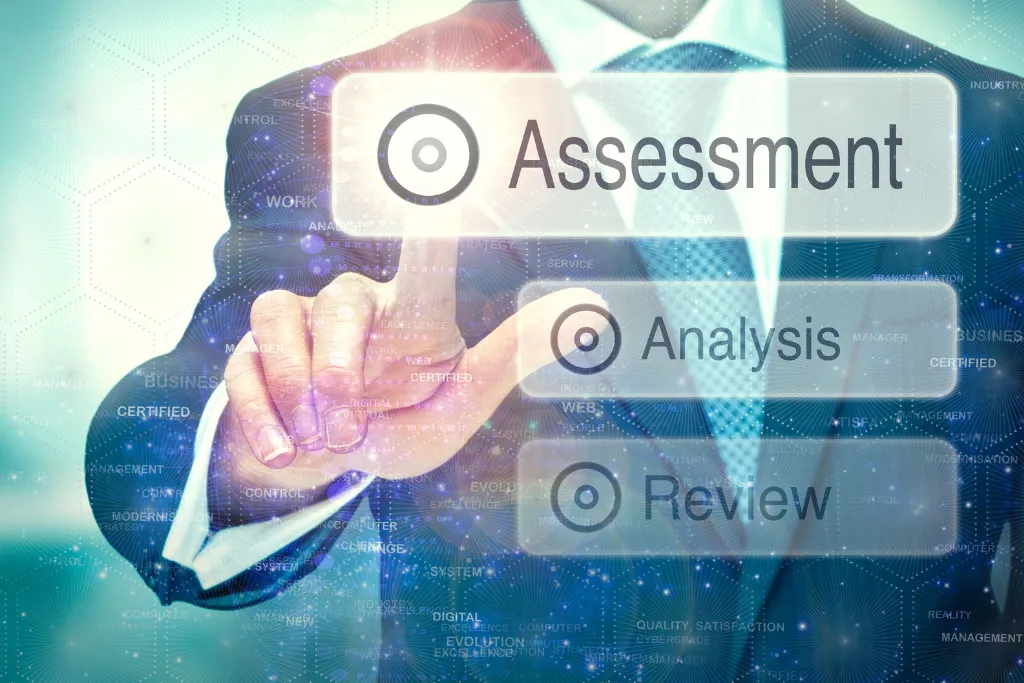Physical Address
304 North Cardinal St.
Dorchester Center, MA 02124
Physical Address
304 North Cardinal St.
Dorchester Center, MA 02124

In today’s world, cybersecurity has become a top priority for organizations across the globe. As companies continue to expand their digital footprint, they inevitably become more vulnerable to cyber attacks. Hence, it becomes essential to conduct vulnerability assessments regularly.
In this blog post, we will cover everything you need to know about vulnerability assessments. From understanding its importance in cybersecurity to exploring different types of assessment tools and methodologies. We will also guide you through the process of conducting a vulnerability assessment and evaluating and mitigating risks.
Additionally, we will discuss the best practices for vulnerability assessments in 2024 and how to adapt to future trends. Lastly, we will compare vulnerability assessment and penetration testing and uncover some key challenges in implementing vulnerability assessments. So let’s dive right into it.

Regular vulnerability assessments play a crucial role in identifying and mitigating security weaknesses before they can be exploited by attackers. By adopting a proactive approach to cybersecurity, organizations can stay ahead of potential threats.
Vulnerability assessments provide valuable insights into the effectiveness of security controls, allowing organizations to prioritize patch management and optimize their defenses. Furthermore, these assessments enable informed decision-making regarding risk management and resource allocation.
Compliance with industry regulations and standards is also ensured through vulnerability assessments. They are an essential component of safeguarding sensitive data and preventing unauthorized access.
Identifying security vulnerabilities across IT infrastructure and potential attack vectors is a crucial aspect of cybersecurity. Vulnerability assessments play a prominent role in this process by aiding in the implementation of appropriate security controls.
Furthermore, they enable organizations to conduct risk assessments and prioritize security measures, contributing to the development of an effective cybersecurity strategy.
Regular vulnerability assessments not only enhance overall security posture but also reduce the risk of data breaches. By providing actionable insights, vulnerability assessments empower organizations to stay one step ahead of potential security flaws and unauthorized access attempts.
Constant advancements in vulnerability assessment methodologies drive cybersecurity growth, as they have evolved to address emerging cyber threats. Modern vulnerability assessment techniques offer more comprehensive coverage, aligning with the evolving cyber landscape.
These methodologies continue to adapt to new technologies, ensuring that organizations can effectively identify and mitigate vulnerabilities in their systems, servers, workstations, and wireless networks.
By utilizing vulnerability testing, vulnerability management, and vulnerability analysis, organizations can proactively identify and remediate security flaws to prevent unauthorized access and protect sensitive data.
This joint effort between vulnerability assessments and information security helps organizations stay ahead of potential risks and secure their computer systems and applications.
Traditional vulnerability assessment techniques may not effectively address modern cyber threats. In contrast, modern vulnerability assessment techniques leverage NLP and threat intelligence feeds to identify emerging threats.
While traditional techniques often focus on known vulnerabilities, modern techniques provide deeper insights into security weaknesses, including misconfigurations. By adopting modern vulnerability assessment techniques, organizations can ensure comprehensive coverage and reduce the risk of unauthorized access to sensitive data.
It is crucial for organizations to stay updated with the evolving cyber landscape and leverage modern vulnerability assessment techniques to enhance their overall security posture.

Vulnerability scanners, a crucial part of the vulnerability assessment process, play a significant role in identifying security vulnerabilities. Penetration testing tools, on the other hand, simulate real-world cyber attacks to identify weaknesses that could be exploited by malicious actors.
It’s important to note that vulnerability assessment tools vary in terms of their capabilities and features. For instance, web application scanners specialize in identifying vulnerabilities in web-based applications, while network vulnerability assessment tools focus on identifying flaws in network security. These different types of assessment tools contribute to a joint effort to ensure information security.
Automated vulnerability scanners offer the convenience of automated scanning, but they may generate false positives. On the other hand, penetration testing tools provide a realistic assessment by simulating real-world cyber attacks.
However, they can be time-consuming and costly. Web application scanners excel at detecting specific vulnerabilities in web-based applications, but they may miss certain types of attacks.
Network vulnerability assessment tools are adept at scanning network hosts for vulnerabilities but may not cover all devices. Lastly, comprehensive vulnerability assessment tools provide a holistic view, but they require advanced expertise.
Read More: The Essential Security Audit Checklist for 2024
The vulnerability assessment process involves the identification, analysis, and prioritization of vulnerabilities within a system. An essential step in this process is vulnerability scanning, which helps to uncover potential security flaws in servers, workstations, and wireless networks.
The results of these scans are then carefully analyzed to determine the severity levels of each identified vulnerability. Remediation strategies are developed based on the severity, allowing organizations to address the most critical issues first.
It’s important to note that vulnerability assessment is an ongoing effort that ensures continuous security by regularly assessing and addressing software vulnerabilities, patch history, and any security flaws that may expose sensitive data to unauthorized access.
This joint effort between information security teams and vulnerability management plays a crucial role in safeguarding computer systems and applications from potential threats like SQL injection attacks.
Begin by clearly defining the scope and objectives of your vulnerability assessment. This ensures that you focus on the areas that are most critical to your organization’s security. Next, identify and prioritize the assets that need to be assessed for vulnerabilities.
This includes servers, workstations, wireless networks, and any other critical systems. Once you have identified the assets, select and configure a suitable vulnerability assessment tool. There are various tools available that can help you automate the vulnerability testing process.
Once your tool is set up, it’s time to conduct the vulnerability scanning. This involves running the tool and scanning your assets for any security flaws or vulnerabilities. After the scanning is complete, analyze the results to understand the severity of the vulnerabilities found. This will help you prioritize the remediation efforts based on the risk they pose to your systems and sensitive data.
Finally, develop and implement remediation plans based on the identified vulnerabilities. This may involve applying software patches, updating configurations, or implementing additional security measures. Regularly reassess your systems on an ongoing basis to ensure that new vulnerabilities are identified and addressed promptly.
Conducting vulnerability assessments is a joint effort involving information security teams, application owners, and system administrators to maintain the security of your organization’s computer systems and applications.
When it comes to evaluating and mitigating risks in vulnerability assessment, organizations need to assess the potential damage and likelihood of exploitation. Mitigation strategies involve applying patches and implementing security controls.
Regular vulnerability assessments contribute to effective risk management by identifying potential risks before they can be exploited. This allows organizations to prioritize vulnerabilities for remediation.
Conducting a risk assessment is crucial when it comes to vulnerability assessments. It helps in identifying vulnerabilities with the highest potential impact, allowing organizations to prioritize remediation efforts based on risk severity levels.
Mitigation strategies may involve patching, adjusting configuration settings, or implementing additional security measures. Effective risk mitigation requires coordination between IT teams and security analysts.
By analyzing vulnerability assessment reports, organizations can gain valuable insights for evaluating risks and developing comprehensive mitigation plans. This joint effort ensures that vulnerabilities are addressed promptly and the organization’s information security is protected.

Regular and comprehensive vulnerability assessments play a crucial role in maintaining the security of an IT infrastructure. To ensure comprehensive coverage, organizations should utilize both automated vulnerability scans and manual testing.
It’s essential to stay updated with the latest vulnerability assessment tools and techniques to effectively identify vulnerabilities in servers, workstations, and wireless networks. Collaborating with security teams and utilizing threat intelligence feeds can enhance the proactive approach toward vulnerability management.
Implementing a continuous vulnerability assessment process allows organizations to address emerging cyber threats promptly. By following these best practices, businesses can minimize the risk of unauthorized access and protect sensitive data from potential security flaws.
As vulnerability assessments continue to evolve, future trends indicate the incorporation of AI and machine learning to enhance accuracy and efficiency. By integrating threat intelligence, organizations can proactively identify potential vulnerabilities.
Additionally, combining vulnerability assessments with threat hunting enables a more holistic security approach. Continuous monitoring and real-time vulnerability scanning are expected to become more prevalent in the coming years.
To improve visibility and incident response, integrating vulnerability assessment data with SIEM systems is a recommended practice. These advancements in vulnerability assessments ensure organizations stay one step ahead in safeguarding their systems and data from potential threats.
When it comes to assessing vulnerabilities and testing the security of systems, there are two primary approaches: vulnerability assessment and penetration testing.
While vulnerability assessment focuses on identifying weaknesses in systems, penetration testing involves actively exploiting vulnerabilities to assess the impact. Vulnerability assessments provide a comprehensive view of security weaknesses, while penetration testing simulates real-world attacks to gauge the effectiveness of security measures.
In terms of methodology, vulnerability assessments are typically automated, relying on tools and technologies to scan systems such as servers, workstations, and wireless networks for potential vulnerabilities.
On the other hand, penetration testing requires manual intervention and expertise to simulate attacks and identify potential vulnerabilities that automated tools may miss.
In terms of cost-effectiveness, vulnerability assessments are more suitable for regular monitoring as they can be conducted on a regular basis using automated tools. This makes them ideal for organizations that need to assess vulnerabilities on an ongoing basis.
Penetration testing, on the other hand, is crucial for identifying critical vulnerabilities that can be exploited by attackers. It requires a more targeted and thorough approach, which often makes it more expensive and time-consuming.
Both vulnerability assessments and penetration testing play a vital role in strengthening overall cybersecurity. Vulnerability assessments provide organizations with a systematic and comprehensive understanding of their security flaws and vulnerabilities, allowing them to prioritize and address the most critical issues.
Penetration testing, on the other hand, helps validate the effectiveness of security measures by simulating real-world attacks and identifying potential weaknesses that could be exploited by attackers.
Implementing vulnerability assessments comes with its fair share of challenges. Staying up-to-date with the ever-evolving threat landscape is a constant struggle.
Managing the vast number of vulnerabilities and prioritizing remediation efforts can be overwhelming. Additionally, identifying false positives and negatives, integrating tools with existing infrastructure, and a lack of skilled personnel further complicate the process.
In conclusion, vulnerability assessments play a crucial role in maintaining the security and integrity of your systems. With the evolving threat landscape, it is essential to adopt modern methodologies and tools that can effectively identify vulnerabilities and mitigate risks.
It is also important to regularly evaluate and update your vulnerability assessment process to keep up with emerging trends and technologies. Additionally, integrating vulnerability assessments with penetration testing can provide a comprehensive approach to identifying and addressing security weaknesses.
However, it is important to acknowledge the challenges involved in implementing vulnerability assessments and work towards overcoming them. By following best practices and staying proactive in your approach, you can ensure that your organization remains resilient against cyber threats in 2024 and beyond.